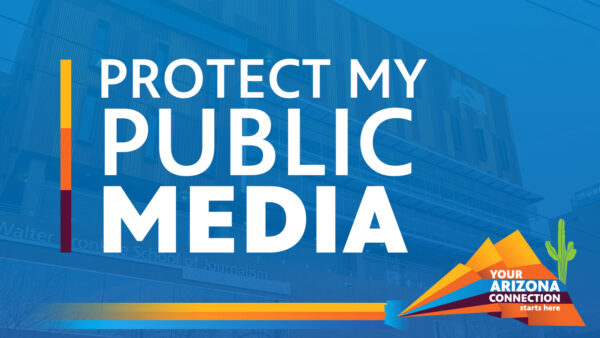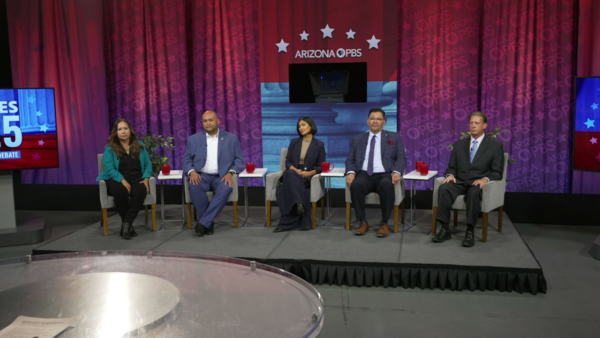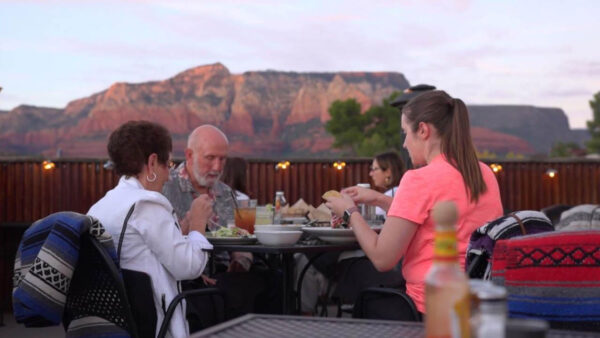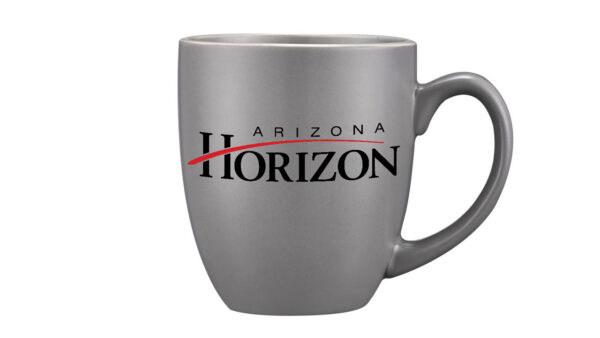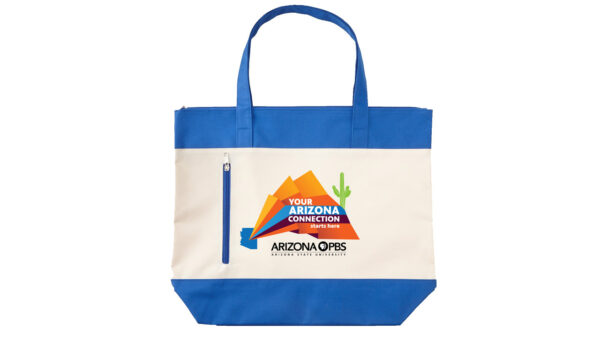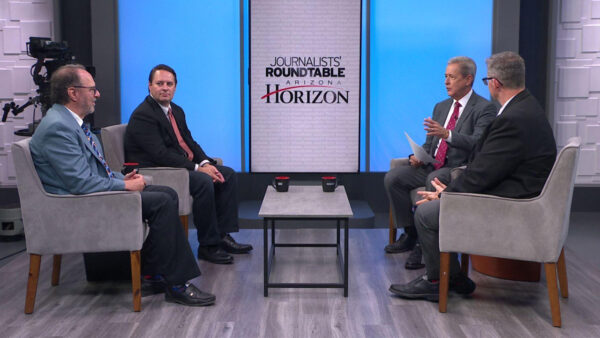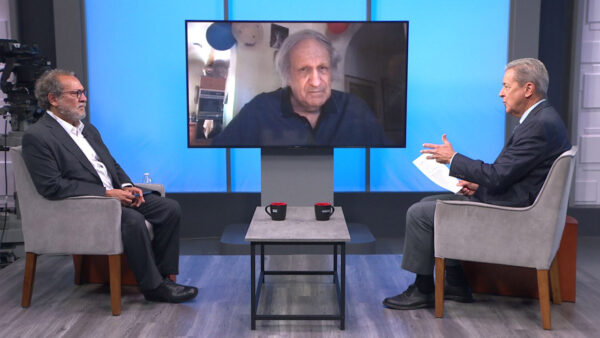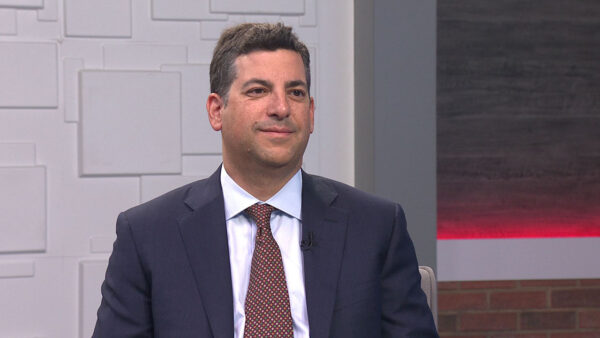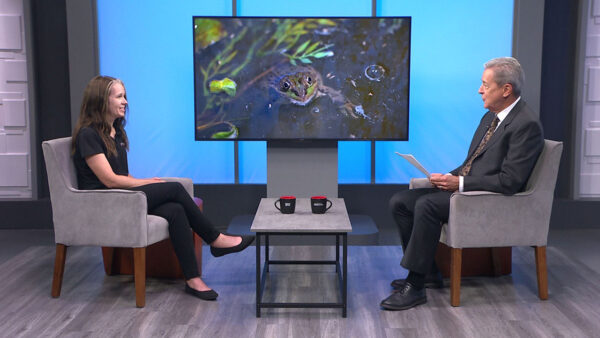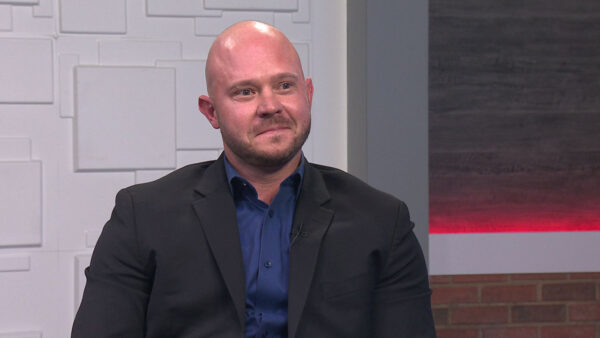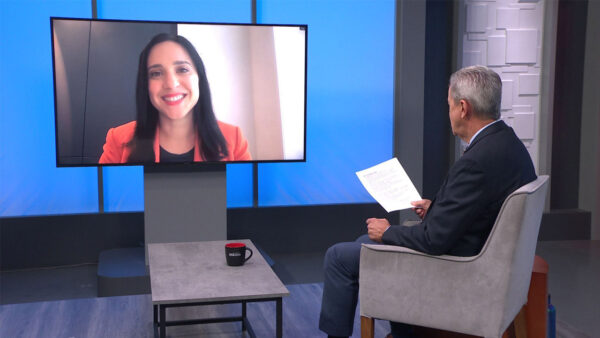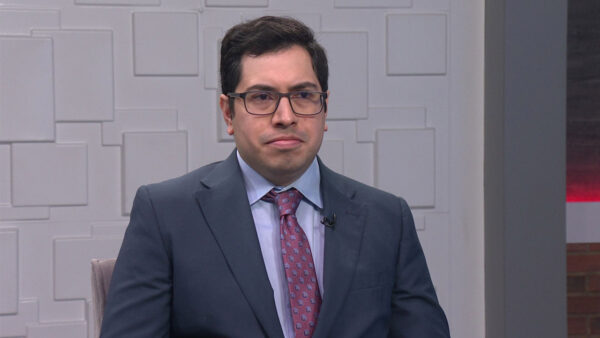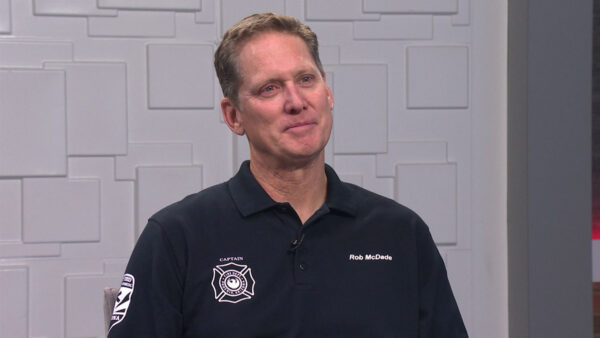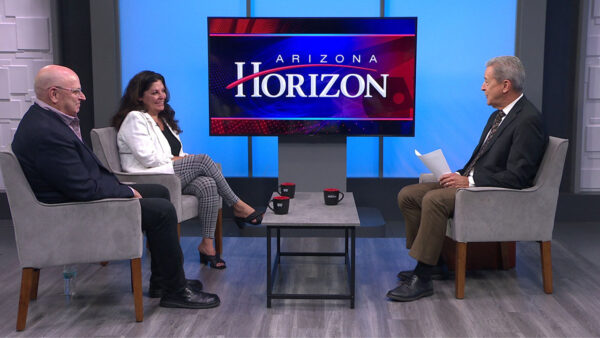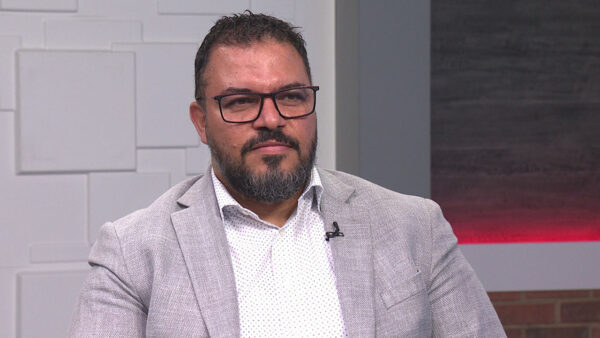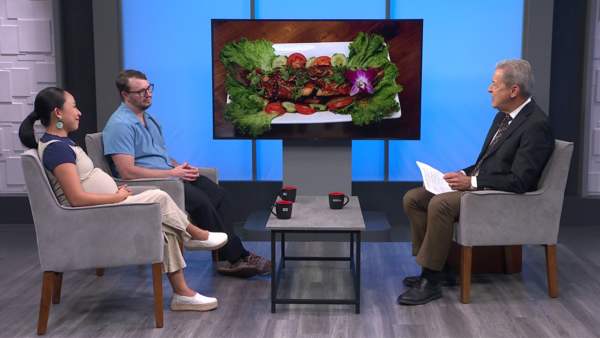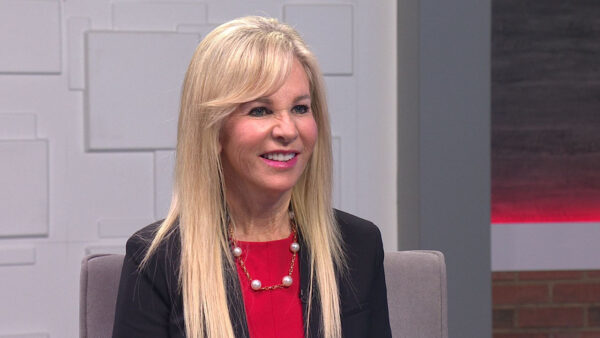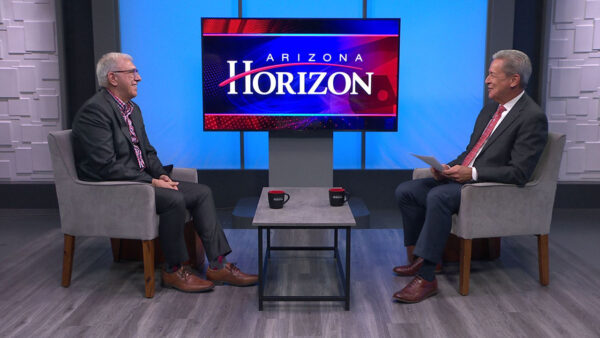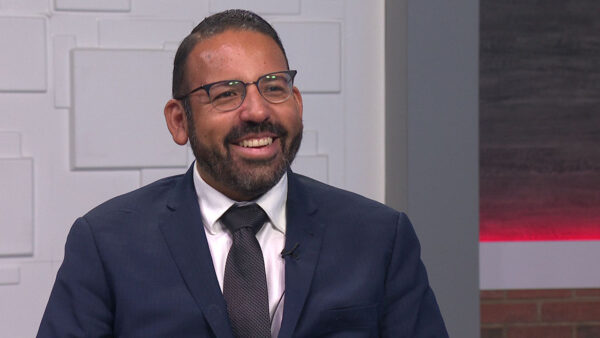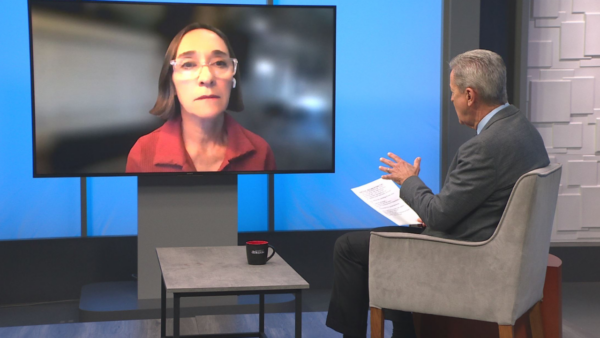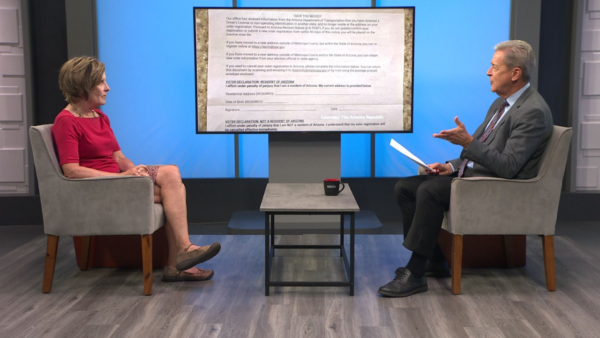Kimber Lanning, Director of Local First Arizona; David Roderique, President and CEO of Downtown Phoenix Partnership; and Robert Melikian, owner of Hotel San Carlos share their views about what’s happening, and what needs to happen, to revitalize downtown Phoenix.
Ted Simons: Good evening, welcome to "Horizon." I'm Ted Simons.
Ted Simons: For the longest time not much was happening in downtown Phoenix but that's finally starting to change and tonight we'll look at what still needs to be done to make downtown a place that doesn't shut down when the work day ends and the sports fans go home. We begin with a couple of locations adding flavor to downtown Phoenix.
David Majure: This is a tale of three cities -- Phoenix of yesterday, today and tomorrow. About people taking a risk on the downtown that is with a vision of what it can be. Steve Rosenstein is in the thick of that fight.
Steve Rosenstein: I think we're the fifth largest city in America and we don't really have the city that we deserve.
David Majure: He and his wife left Chicago, bought this downtown Phoenix warehouse and opened it as The Duce in May 2010.
Steve Rosenstein: It pays tribute to what the neighborhood was way back in the day. This building was built in 1928. Some of the local stores here still refer to this neighborhood as the Duce. This is the original skid row, old illegal gambling place, the speak easies, jazz clubs. The rock and roaring part of town in the '20s. But also the produce district and we combined prohibition with produce. Its freshness meets grittiness and you can experience great food and ambiance and outdoor seating on patio and great authentic bar with vintage prohibition era cocktails, organic liquor, fresh squeezed juices. And there's a kid element to the place. We've got the old time 1915 soda fountain and then of course on surplus, our clothing brand which makes you feel like you're in a 1960 Americana sporting goods store. It can be a lot of different things. I mean everybody who walks in tonight at 6:00 is going to experience one of the toughest workouts of the week.
David Majure: Rosenstein Steves' betting that a little bit of the past is good for Phoenix's future.
Steve Rosenstein: That's why our tagline is it is what it was. Instead of it is what it is. I think any legitimate community-minded business for downtown Phoenix is good for downtown Phoenix because Phoenix has been lacking that. It had it, and people say there'll never be a downtown Phoenix, I show them pictures of what I have on the bar. Back in the '20s, '30s and '40, up until '50s, till the sprawl, Central Ave. which was then Center Street had five major department stores on the street. But downtown Phoenix was a thriving downtown.
Jeff Moloznik: Where we're at, which is Central and Washington was really the historic center of Phoenix.
David Majure:Jeff works for RED Development, a company making a $900 million downtown investment in the form of cityscape.
Jeff Moloznik: Two blocks in downtown Phoenix that we've built retail and office space on and people can come downtown now and walk 600 feet and go across 30 restaurants and bars, everything from Sam fox's arrogant butcher to the grocery behind us, to everything you can imagine, we're 100% leased and 200,000 square feet and see a demand for another additional 100,000 at a minimum. We started the project in 2005 and the idea was to recreate what we saw in downtown Phoenix in 1920 sand born maps and pictures which had a series of shops, restaurants, bakeries and hotels - all tightly clustered and accessible by a trolley car network.
David Majure: Light rail was a big factor in the company's decision to take a risk on cityscape.
Jeff Moloznik: Yeah. The state, city and county has spent over $3 billion in infrastructure improvements, completed at the end of 2008. The light rail, of the convention center, the Sheraton Hotel and the ASU campus, it's hard to think something tremendous isn't going to happen when that size of an investment is made in downtown.
Steve Rosenstein: Now you need the small gritty guys like us, my wife and I, to come down and say we'll bring the flavor down.
David Majure: The Duce and cityscape have added spice. But they need seasoning to transform from a place to visit to a place where people want to live.
Jeff Moloznik: ASU campus has started to lead the trend. And as more activity starts to happen, more people will want to live down here. It's a quality of life. People are making the choice conscientiously and we're contributing by bringing amenities here.
Ted Simons: Joining me to talk about the revitalization of downtown Phoenix is Kimber Lanning, a small business owner and director of Local First Arizona, Robert MELIKIAN, the owner of hotel San Carlos, and David Roderique, the president and CEO of Downtown Phoenix Partnership.
Ted Simons: Good to have you all here.
Kimber Lanning: Thank you.
Ted Simons: Thank you for joining us.
David Roderique: Thank you.
Ted Simons: Kimber, let's start with a simple question. What's the state of downtown Phoenix?
Kimber Lanning: It is growing, it's fast becoming vibrant and I think we've seen a shift from focusing on the large projects to focusing on what I call the fine grain stuff and that's a wonderful welcome. We have a lot of businesses filling in the blank spaces, what people call the missing teeth. There's a lot of vibrancy and it's a great opportunity and it is a great time for entrepreneurs to move in downtown.
Ted Simons: Great time for downtown Phoenix?
Robert Melikian: It is getting better, but there are many good things and we have blocks that are un-walk able and not conducive to people who stroll which is I think is the test of a successful downtown.
Ted Simons: Is that how you see it as well? Good stuff happening here, not so good here. Is there a patchwork thing happening here?
David Roderique: There is. Downtown is evolving dramatically and it's come so far in the past 20, 30 years. 20 years ago, you just didn't come downtown period. There was no reason to come here. So we've been in essence, creating an entire downtown from scratch. And have made huge progress but there's still a long way to go.
Ted Simons: Where is downtown Phoenix? What are we talking about here?
David Roderique: In terms of?
Ted Simons: Just in terms of location. You talk about downtown Phoenix, some think grand avenue, some think Roosevelt row, others the ballparks. Where is downtown Phoenix and where is this vibrancy happening?
David Roderique: I think most define it as seventh street, seventh avenue, and from the I-10, the deck park tunnel south to the railroad tracks. That area certainly has pockets and as you referenced, there's a patchwork that's developed and there are some areas clearly growing and others areas that need a lot of work but we've made a lot of progress in the past 20 years.
Ted Simons: The question where is downtown Phoenix is asked because in other downtowns you've got a focal point. Whether it's a massive park, some structure, government or private or otherwise. Is that still missing in downtown Phoenix? Do people know what downtown Phoenix is?
Kimber Lanning: That's an excellent question. A lot of people who live in the outlying suburbs don't know what it is. But we're 500 square miles which makes us an unusual city. What I like about the time in Phoenix's history is the neighborhood names as they were authentically and originally are emerging and people are starting to use, whether it's Arcadia or Garfield or Roosevelt or uptown, people are starting to use these terminologies to define themselves and shows we're graduating into the next phase of a growing city.
Ted Simons: Is there a maturation process going on here?
Robert Melikian: There is, but I consider the tea we have in the city, downtown is a smaller area and we have to get people going into the area Seventh Street, Seventh Avenue, Van Buren, Jefferson, and get them used to going to these places. Nowadays, you want to stroll in the evening, you don't consult a schedule. You go to the Biltmore Fashion Park or downtown Tempe. That's the mental image we have -- you can show up and businesses will be open on the ground floor.
Ted Simons: How do you do that though? Do you need a park, bike paths and walkways and less in the way of traffic? How do you accomplish this?
Robert Melikian: All of those help but you need ground floor activities when the people at the Gaslamp in San Diego, they told us you need something every 15 feet for people to stroll. If you don't, that even in wonderful places like San Diego, we have blocks that are un-walkable. And I think that's our big problem here. We have not required people to put pedestrian-oriented activities every 15 feet.
Ted Simons: Have we figured out that we live in a place where for a few months out of a year, it's difficult to take three steps much less walk three blocks? Is there a way to get that incorporated into a downtown area where it's bustling and looks like other downtowns?
David Roderique: Clearly we'll always be fighting a battle with the heat, just like Minneapolis the cold in the winter. We're trying to do things as much as we can. Planting shade trees and experimenting with things. There's a solar-powered air conditioned light rail stop opened by the ballpark. We're looking at different ways we can enhance the environment. But I agree, you have to have things on a regular basis and the fine grain is critical to attracting people to downtown. Adding small outdoor cafés and shops and restaurants and so on, and that's where we're focused in the coming years.
Kimber Lanning: What we need to start talking about, to talk about the policies surrounding the dirt lot owners that essentially protect them. They're land banking and paying 15% less on property taxes than the rest of us who are trying to contribute to a productive downtown. Until we have the hard conversations how do we help people either sell these properties, build on these property, what are we going to do to get them moving along? Because they're holding up the process of building a downtown.
Ted Simons: That's a great point. Three things, your initial impressions. Let's start with Cityscape. Good? Bad? Whaty going on down there?
Robert Melikian: It's good. It's an island and I wish people would go there, the bowling is terrific there and we have to build on things like that.
Ted Simons: Cityscape, what do you see?
David Roderique: I see good as well. They could have done some things better. They're a little too inward focused sometimes, but overall, ultimately, I think going to be a great addition for the community. They've got a lot of restaurants and activities and I really think it is going to be very positive.
Ted Simons: Kimber, are the restaurants going to last. An Arizona center or Mercado?
Kimber Lanning: No, I don't think we will. We've reached the tipping point and they've got the right operators, I don't want to look back. I think we're moved forward.
Ted Simons: ASU downtown campus, is it putting the life into downtown that a lot of folks were expecting?
Kimber Lanning: Yes, and no. We have a lot of bridges to build still. I think now, this year is the first year we're starting to see more students integrate into the downtown. I think there was definitely a resistance in the beginning, there was a reluctance with meeting -- there was a reluctance, and it was coming from the administration. When you have faculty projecting that the downtown is scary, the students don't know what to think. The downtown campus is safer than the Tempe campus and dirt lots do not equate to crime. We're seeing the students going, wow! There are a lot of food options and a lot of stuff going on I. Met a student who looked for a restaurant by walking east on Washington. I wanted to hug her.
Ted Simons: The ASU downtown campus, instilling the life that you expected?
Robert Melikian: Not quite. But between the promise of ASU students coming downtown and the retail catering to them and the market correcting for people living downtown, which is an essential ingredient, we're getting there.
Ted Simons: Downtown campus, what are you seeing?
David Roderique: I think it's very positive. We're now starting to get the students more integrated into the community. Just yesterday, we let a -- led a tour for the new students and showed them around downtown, the different areas and restaurants and they're excited about that. I think there are a lot of opportunities, but its one piece of the puzzle. There are a lot of other things, we clearly need more residential. That's number one on the list. Because body that's live in downtown, that helps to truly create that 24/7 environment we need.
Ted Simons: You mentioned something about how you're creating a downtown. Question: Can you create a downtown? Or must it -- is it the kind of thing that needs to grow organically and then you respond to it? Can you create a downtown environment?
David Roderique: I think that's what we've done. We're not there yet but we've created first off, the major anchors that really help to support of the core of downtown. The convention center, the new Sheraton and the ASU campus, etc. Once they're in place, you'll see a lot more of the organic growth that will happen in terms of small businesses and entrepreneurs and so on that will create the downtown we're looking for.
Ted Simons: We hear critics say it's artificial and you can't grow something that needs to grow holistically. Is there a point there?
Kimber Lanning: What we've seen downtown is both words going at the same time. Roosevelt Row is very organic. There are pockets throughout downtown where Steve Rosenstein is down there at the deuce. That's organic. Dave is right, we've done well with putting in the major anchors, but we didn't start from scratch. Rob has been down here with the San Carlos since what year? The hotel hack there since the '20s, right? My point is that it was there, and happened organically the first time. We've rebuilt a lot of pieces but some of things existed throughout the duration, and it's side by side new and old that will make downtown work.
Ted Simons: Last word - Can you create a downtown?
Robert Melikian: I of the school that you give people choices and fun things to do and the market will bring the high rise and big development you need to give the people a reason to go downtown and start at the bottom and it will fill in with the market.
Ted Simons: Those who say it has to grow holistically, you say it can given the right circumstances.
Robert Melikian: Right, you can nudge business people but it has to be holistic.
Ted Simons: Great conversation. Good to have you here.
Kimber Lanning:Director of Local First Arizona; David Roderique:President and CEO of Downtown Phoenix Partnership; Robert Melikian:Owner of Hotel San Carlos;
